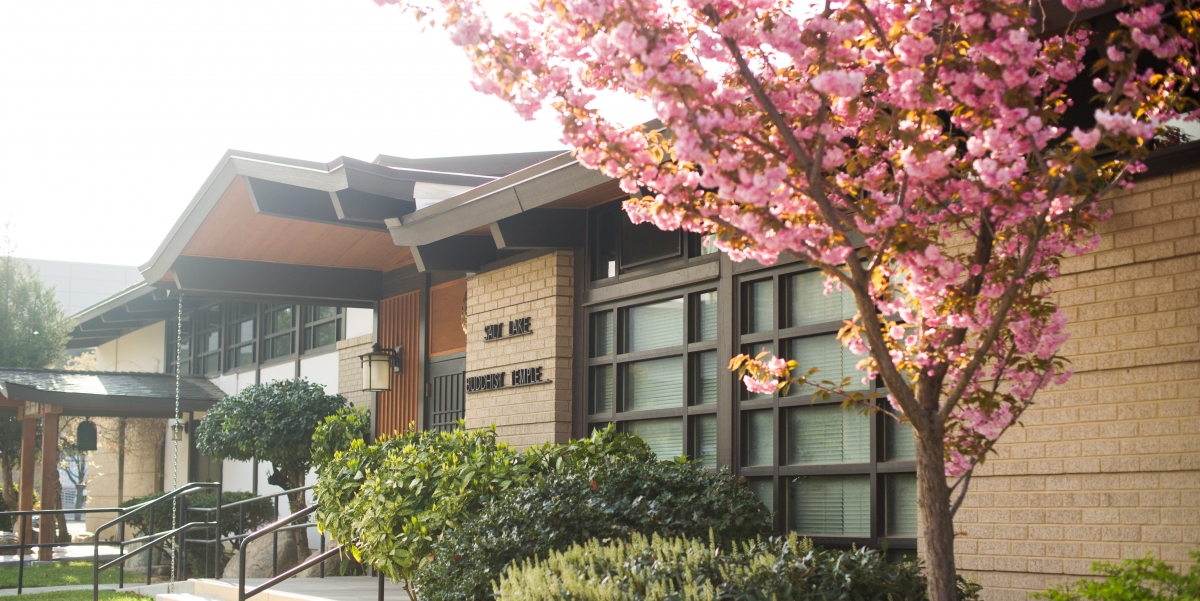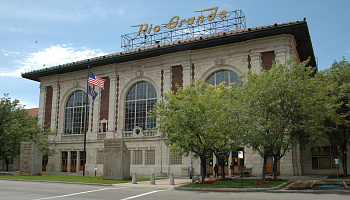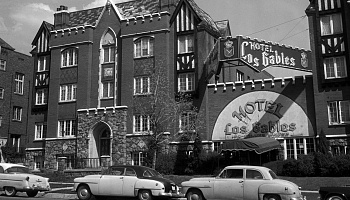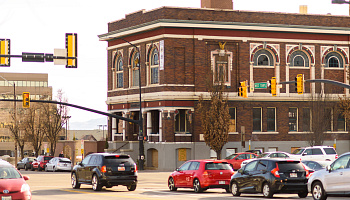The street signs on the sleepy corridor of 100 South between 300 West and 200 West read “Japantown.” This corridor is home to the Salt Lake Buddhist Temple, the Japanese Church of Christ--who are celebrating their 100th anniversary, the vibrant Nihon Matsuri, Obon, and other street festivals, and a small, meditative Japanese-style garden. But what these street signs don’t convey is the long history and struggle of the neighborhood they mark, as the current iteration of Salt Lake’s Japantown has seen many changes to the downtown community they have called home for more than 130 years. 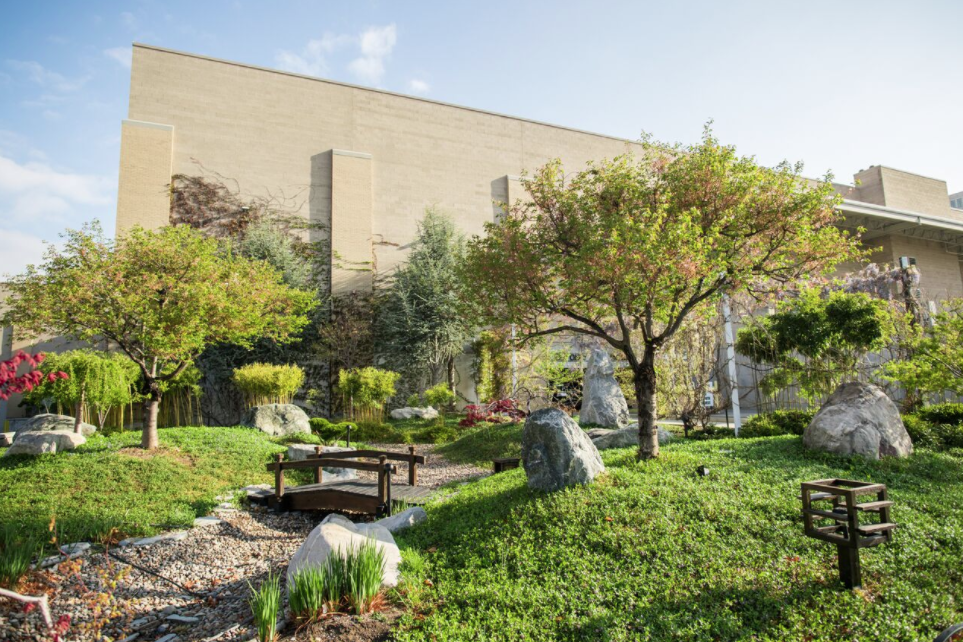
In the late 1880s, Utah received its first generation of Japanese immigrants—known as Issei—who answered the call for labor demands in Utah’s mining and railroads industries. In 1902, Edward Daigoro established the E.D. Hashimoto Company one block north of what would become Japantown. Daigoro provided coordination between Utah industries and Japanese laborers, also providing the Issei with various supplies, Japanese food, payroll, and intermediary services with the local government.
By 1910, the Utah Japanese population was more than 2,000 strong, and many families made their way to Daigoro’s emerging Salt Lake City neighborhood. This area, defined by the boundaries of South Temple to State Street, 400 South to 700 West, quickly developed as the core of the Issei community. The neighborhood boasted noodle houses, hotels, bustling cafes, apartments, bathhouses, variety stores, grocery stores, confectioners and fish markets. 1912 saw the construction of Salt Lake’s first Buddhist temple, located at 250 West South Temple and, in 1918, the Japanese Church of Christ was built across the street. Two newspapers—The Utah Nippo and Rocky Mountain Times—served the Japanese community, offering both Christian and Buddhist perspectives. The Utah Nippo bought the Rocky Mountain Times, and in 1931, began publishing the front page in English to accommodate the Nisei, or second-generation residents, who were becoming less fluent in the Japanese language.
World War II Community Impacts
Before World War II, the residents of Japantown developed a strong, compassionate community that continued to grow, thrive, and benefit Salt Lake. But this environment drastically changed, as the American mindset was altered after the actions of World War II, with the adoption of policies that had major impact on the community of Japantown. As some families were able to stay in their homes, though under intense F.B.I. scrutiny, many of Japantown’s community leaders were harassed, detained, and sent to internment camps. The Topaz internment camp in Millard County was home to approximately 8,000 Japanese persons.
The community in Salt Lake’s Japantown empathetically donated thousands of dollars in books, equipment and resources for educating the children interned at Topaz. Under federal orders, both the advocacy organization Japanese American Citizens League (J.A.C.L.) and the headquarters of the Buddhist Missions of North America, originally based in California, temporarily found refuge in Salt Lake. This atmosphere also saw The Utah Nippo develop as a crucial voice for Japanese Americans across the country, having wide distribution among internment camps and more than 7,000 subscribers in peak war years.
Life after Topaz saw many Japanese—previously living in California—joining the community in Japantown, as well as a number of the soldiers from the U.S. Army’s majority Japanese 442nd Infantry Regiment who, while being treated in Utah hospitals, experienced the hospitality of this community. In 1950, the first of the Issei received their American citizenship. As new generations of Japanese Americans found themselves engrained in communities throughout Salt Lake City, these Issei remained the primary residents of a neighborhood still housing bustling retail shops and two cultural hubs—the Buddhist and Christian churches.
With urban renewal on the minds of Salt Lake developers in 1964, a bond to build a new Salt Palace was publically approved. The identified corridor for the new development was in the heart of Japantown, a dense and bustling area home to many cafes, social clubs, apartments, businesses, markets, hotels, and a movie theatre. Preservation committees formed with the interest of protecting the neighborhood, but ultimately could not gain enough support to save Japantown or influence developers and city leaders to find an alternate location. The construction of the new Salt Palace displaced many residents and businesses of Japantown and ultimately destroyed their vibrant community and sense of identity and belonging. Plans to reestablish and support the newly displaced community and businesses—such as Salt Lake City developing a “Little Tokyo” or the local Japanese-American community establishing a Far East Cultural Center—never materialized, causing those displaced to either start over in new parts of Salt Lake or close their businesses permanently.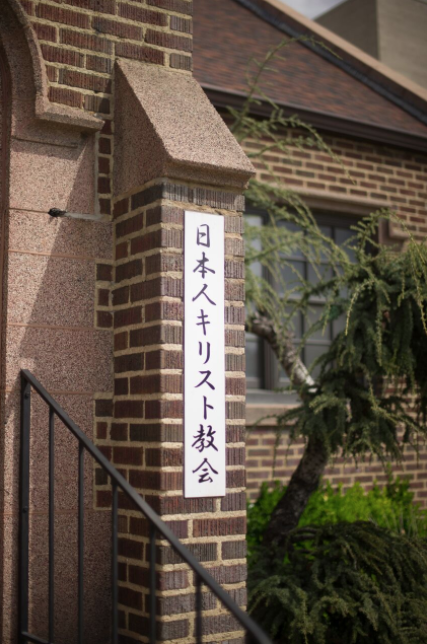
Japantown Recognition
Fast-forward 40 years and Japantown finally received some deserved recognition. In 2007, the corridor of 100 South between 300 West and 200 West was ceremoniously named “Japantown Street” and, located east of the Japanese Church of Christ, a small, Japanese-style garden paying homage to Japanese community leaders was included in the Salt Palace expansion of that same year. Though it’s vitality can never be restored, as further Salt Palace development has squeezed the areas around both Japantown churches, community leaders are working to advocate for and reimagine Japantown. Sen. Jani Iwamoto, D-Holladay, and retired 3rd District Judge Ray Uno formed the Japanese Community Preservation Committee to preserve the legacy, contributions and voice of Japantown, and to ensure that this history is respected as new commercial and residential developments in this area pose a possible further encroachment upon both the Buddhist and Christian churches and the future of their Nihon Matsuri and Obon street festivals.
Obon & Nihon Matsuri Celebrations
In 1936, at the Salt Lake Buddhist Temple, the community held its first Obon celebration. The Obon holiday is a Japanese Festival of Joy similar to Memorial Day, with people visiting their hometowns, their families and the graves of loved ones. This first celebration united the local Japanese population, attracted outside interest, and raised funds for community projects. Now in its 82nd year, this free, annual tradition—taking place this year on July 14th—will feature Japanese food, vendor booths selling kimonos, umbrellas and other Japanese items from the temple's newly opened bookstore, the popular Taiko drum performers, and the celebratory community dance.
Another beloved Salt Lake event is the Nihon Matsuri. This free and open to the public annual festival celebrates Japanese and Japanese American culture, history, traditions, and the legacy and contributions of the Japantown community. April 28th will see the corridor of 100 South activated with a day full of live performances—featuring an exclusive fashion show presenting traditional and contemporary kimonos designed by Sueko Oshimoto of KimonoSK, special musical guests the Taikoza Group, amazing food, tea ceremonies, vendors with traditional Japanese clothing, decorations and gift items, alongside historical and cultural exhibits, and a cosplay contest. There will also be free children’s activities like face painting, coloring pages, kite making and more.
Concurrent with Nihon Matsuri is the Raymond S. Uno Celebration, which takes place on Thursday, April 26. Presented by the J. Willard Marriott Library Special Collections, University of Utah and The Raymond S. Uno Legacy Celebration Committee, this annual celebration pays tribute to Judge Raymond S. Uno’s lifetime of efforts as an advocate of human and civil rights, especially social justice for all persons, regardless of racial, cultural, gender identity and religious difference. The evening will feature a dinner and a special presentation by Mr. Dale Minami, a partner with Minami Tamaki LLP, who was involved in the civil rights litigation of Asian Pacific Americans including the Korematsu vs. United States lawsuit that overturned a 40-year old conviction for refusal to obey exclusion orders aired at Japanese Americans during WWII. Special achievement awards will also be presented to Archie Archuleta, J. Boyer Jarvis and Margaret Yee.
With the gaining popularity and reach of its various festivals and celebrations, the informative and influential workshops, outreach, and faith services offered both by the Salt Lake Buddhist Temple and the Japanese Church of Christ, alongside an increased public awareness of Japantown’s role in Utah’s history, a stronger stance on advocacy and support for this community in the proposed new commercial and residential developments in this corridor need to be taken. Japantown’s legacy and impact in Salt Lake should finally be recognized and celebrated, not forgotten.

